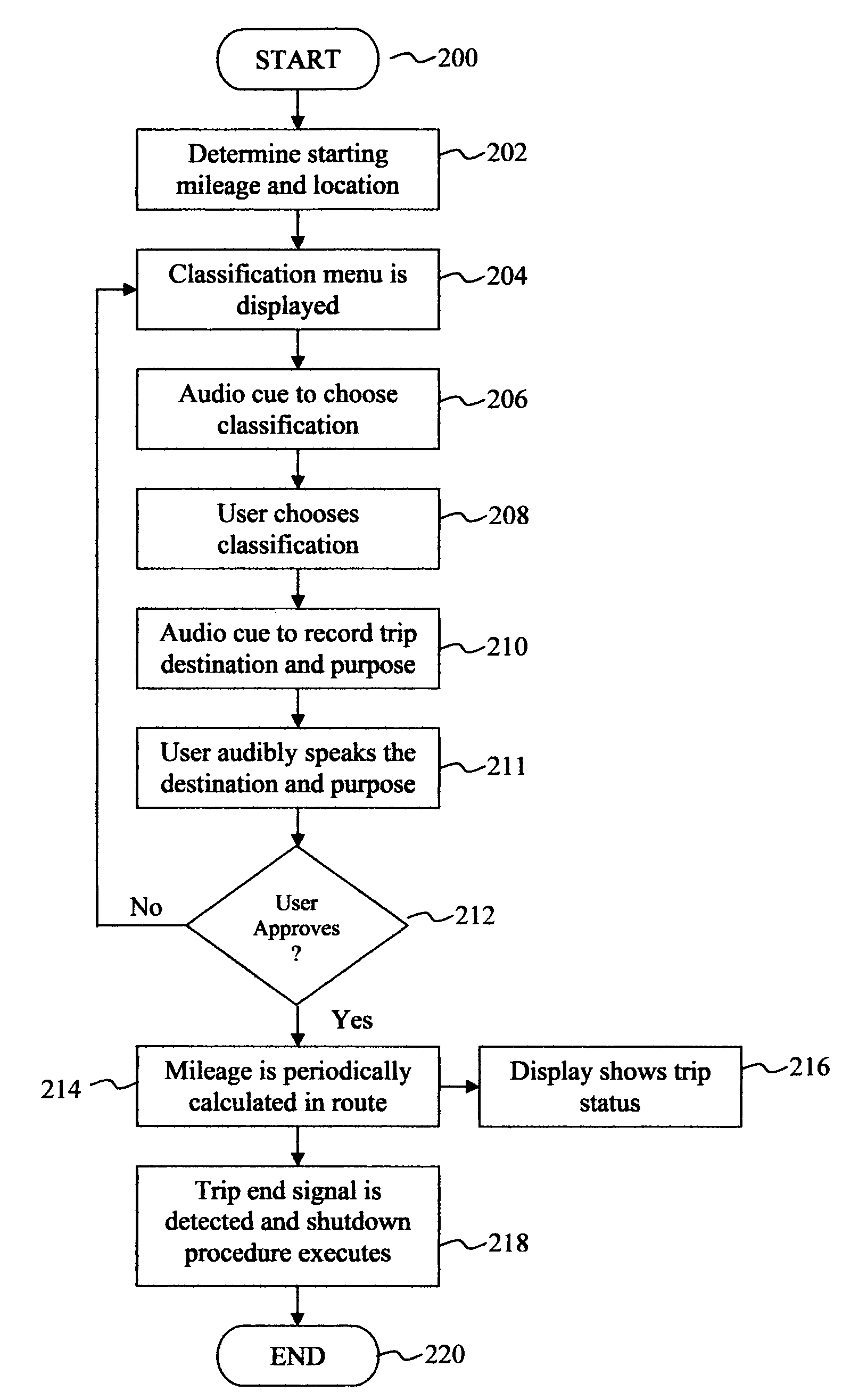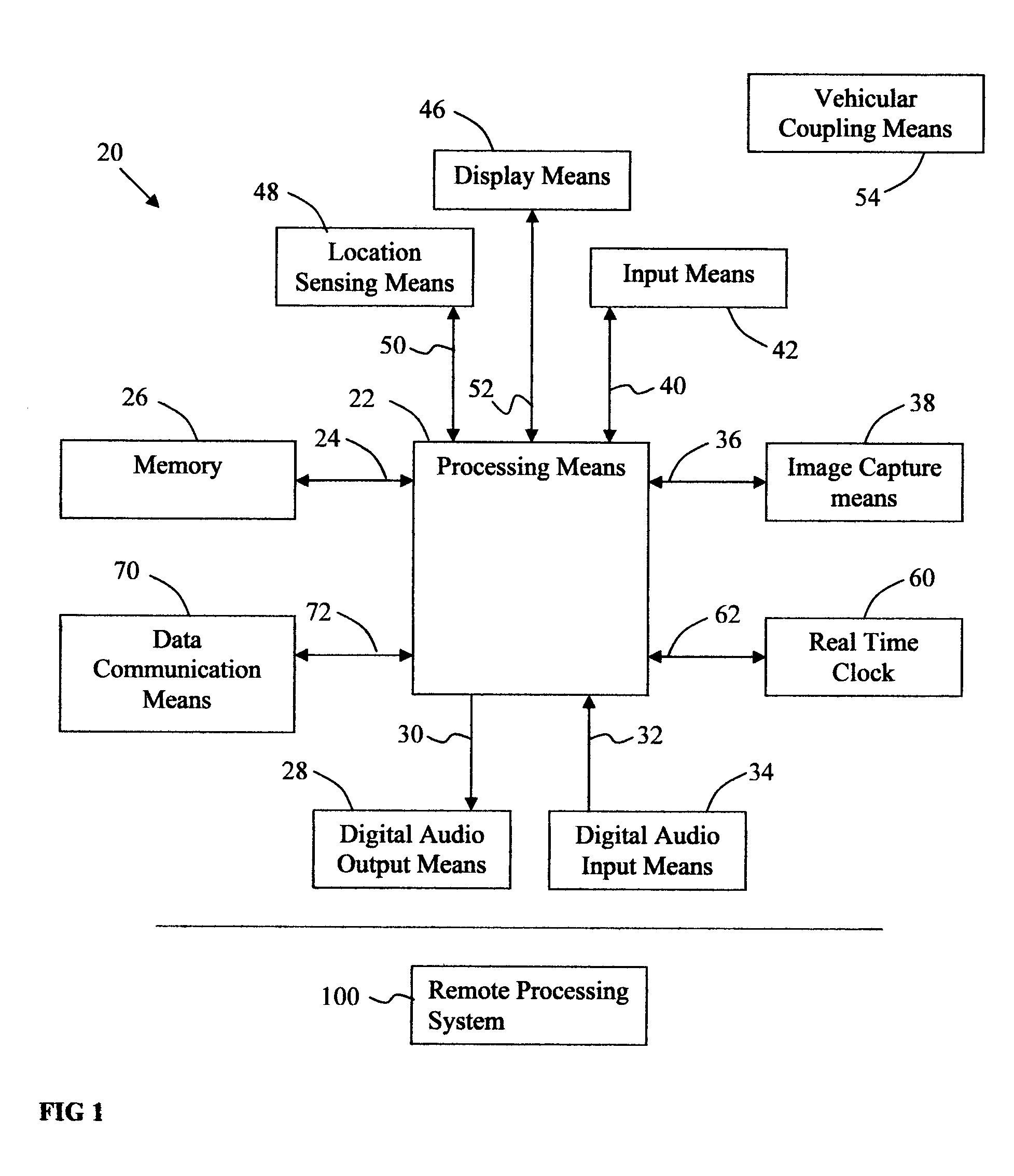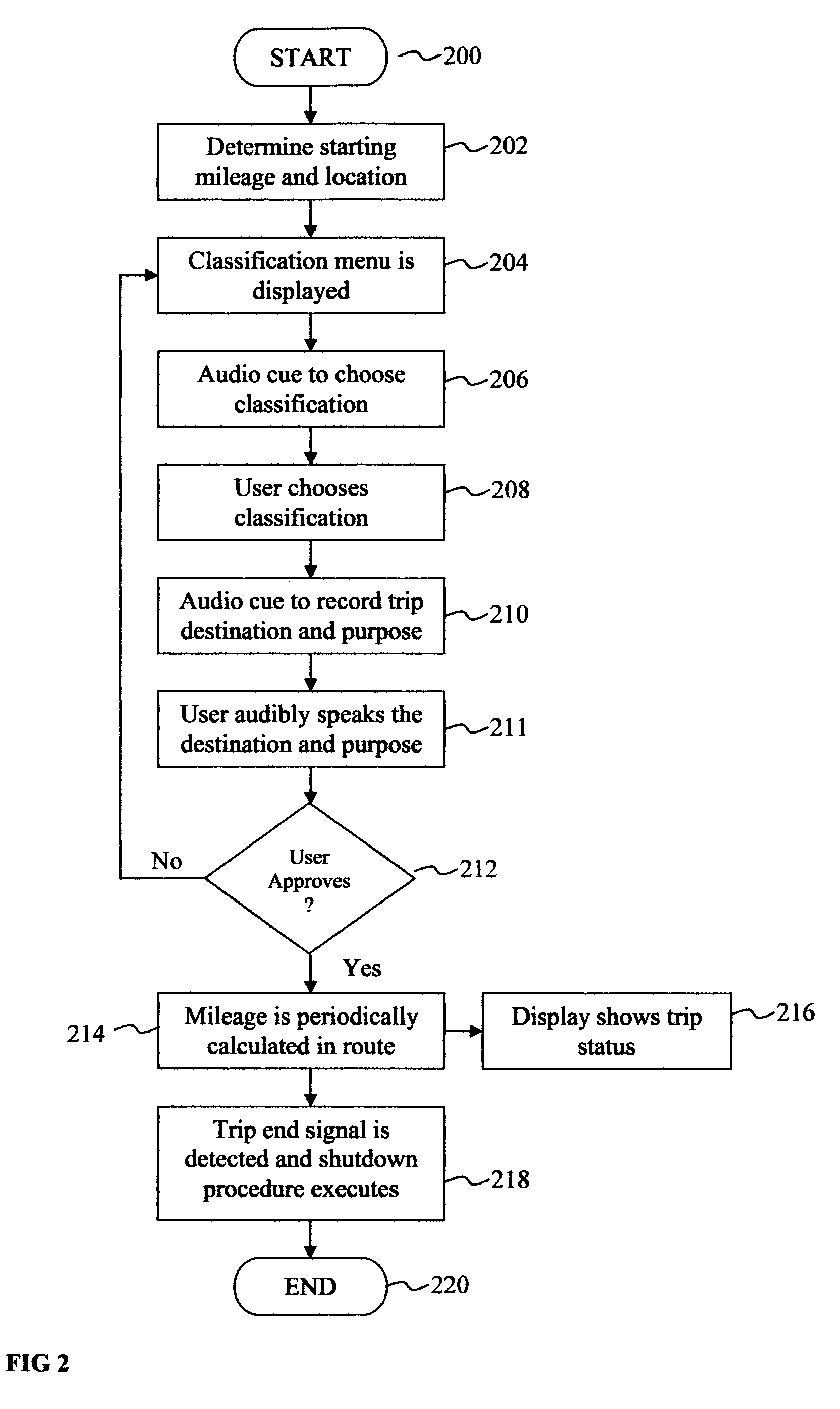Vehicular monitoring system
- Summary
- Abstract
- Description
- Claims
- Application Information
AI Technical Summary
Problems solved by technology
Method used
Image
Examples
Embodiment Construction
Preferred Embodiment—FIG. 1-3
[0084]With reference to FIG. 1 of the drawings, an exemplary vehicular monitoring system for practicing the method of the present invention is generally indicated by reference numeral 20. Monitoring system is optionally coupled to Vehicular Coupling Means 54 which is the vehicle's cigarette lighter socket in one embodiment. When the vehicle's ignition is turned on, power is supplied to Vehicular Coupling Means 54. When the vehicle's ignition is turned off, power is removed from Vehicular Coupling Means 54. The application of power to 54 acts as a trigger to the Processing Means 22 to begin processing as described in FIG. 2. The processing means in this embodiment is a microcontroller. When power is removed from 54, the Processing Means senses the removal as the end of a trip and processes shutdown procedures before power at 54 has reached a level that causes Processing Means 22 to stop functioning. Application of power to 54 acts as a signal to indicate ...
PUM
 Login to View More
Login to View More Abstract
Description
Claims
Application Information
 Login to View More
Login to View More - R&D
- Intellectual Property
- Life Sciences
- Materials
- Tech Scout
- Unparalleled Data Quality
- Higher Quality Content
- 60% Fewer Hallucinations
Browse by: Latest US Patents, China's latest patents, Technical Efficacy Thesaurus, Application Domain, Technology Topic, Popular Technical Reports.
© 2025 PatSnap. All rights reserved.Legal|Privacy policy|Modern Slavery Act Transparency Statement|Sitemap|About US| Contact US: help@patsnap.com



